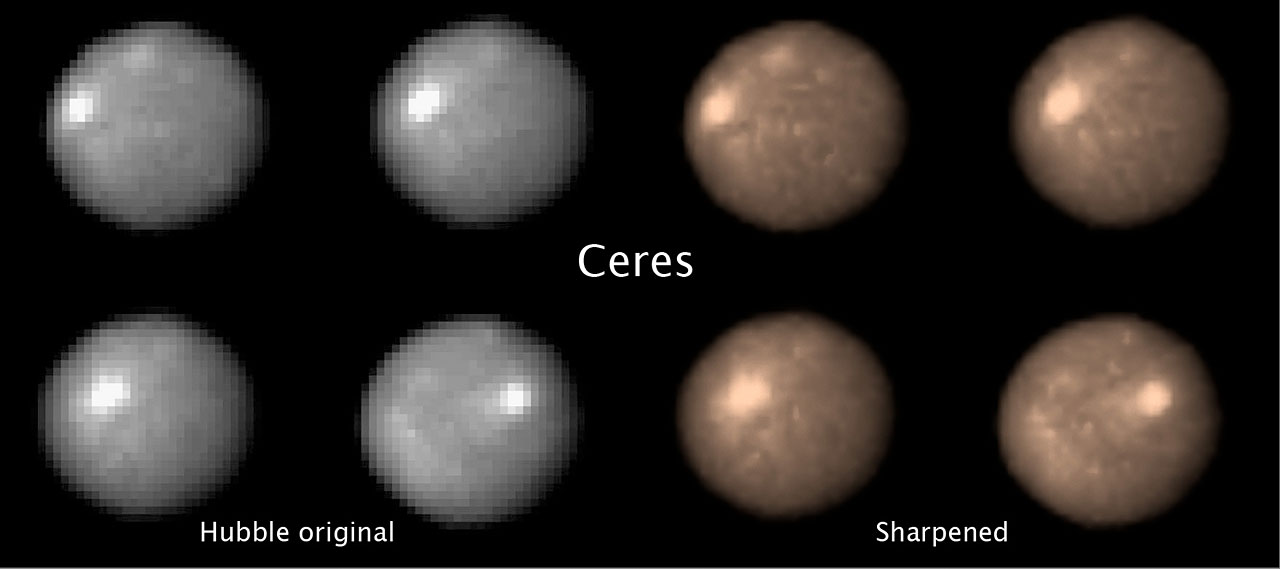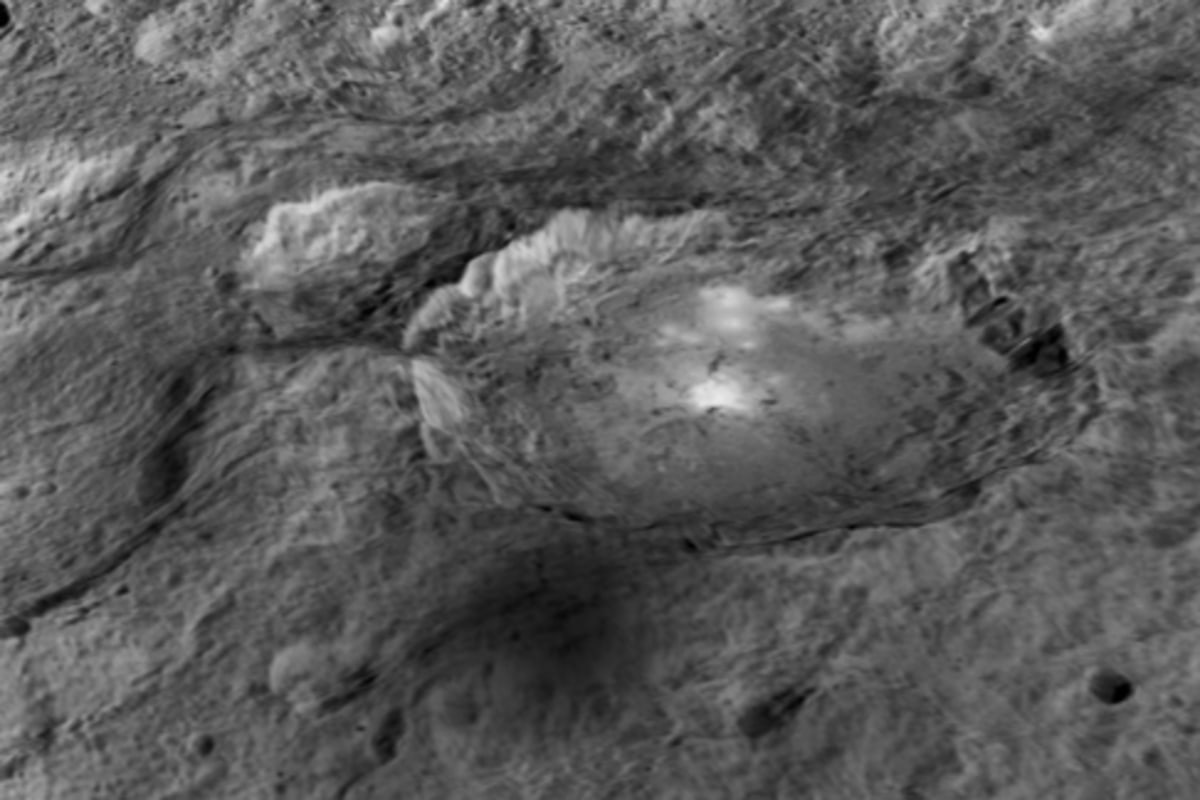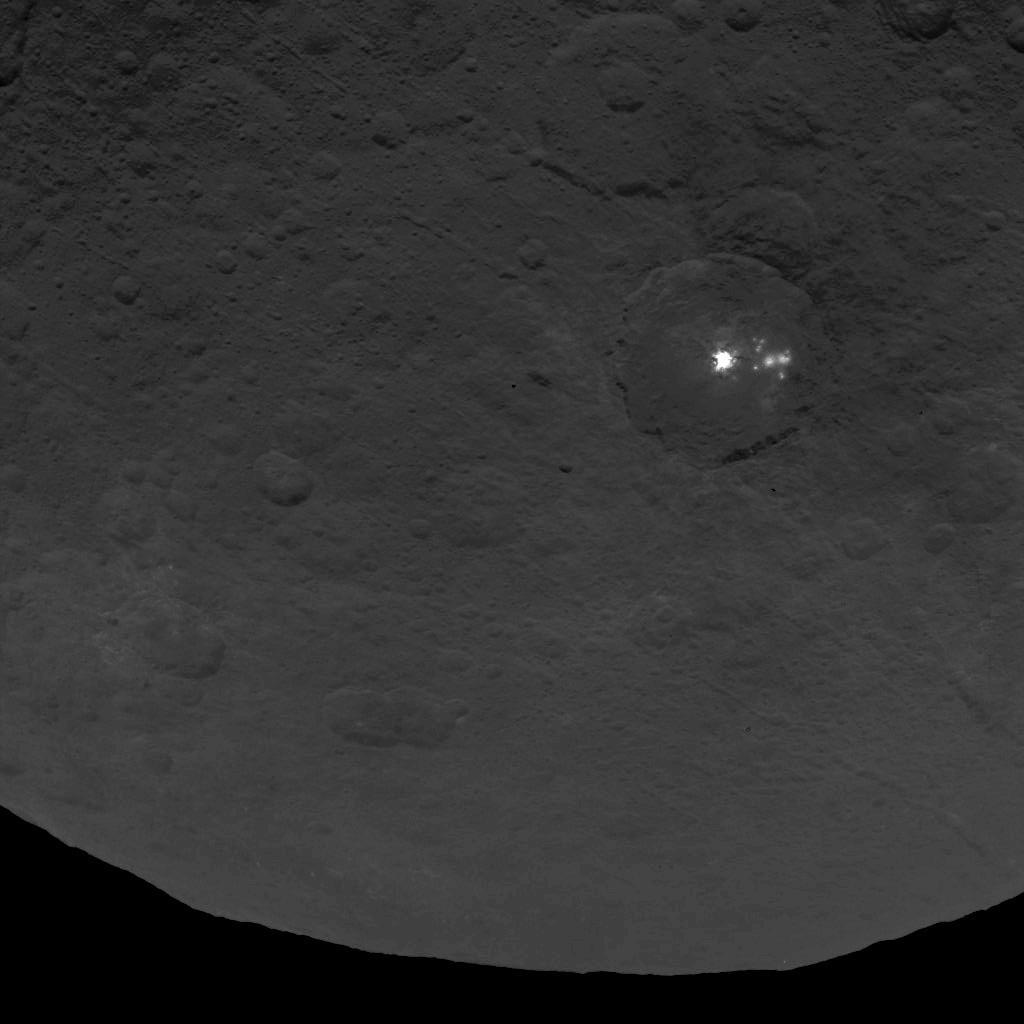Over the last ten or fifteen years a quiet revolution has been going on in space technology: Like computers in the latter half of last century, they've been getting smaller - and the most popular of the miniature spacecraft is the 10cm by 10cm by 10cm cubesat. This year has seen cubesats start to come of age, with a cubesat flying with a solar sail, cubesats flying to Mars, and now a cubesat based craft from Arizona state University is set to map water ice deposits on the Moon:
Five months ago the Dawn spacecraft pulled into orbit about the dwarf planet Ceres. One of the first things its team noticed - in fact something that had even been noticed by the Hubble space telescope from Earth - were some incredibly reflective spots punctuating the dusty surface. These were so bright that Dawn's camera had trouble seeing inside of then, due to the glare.
 |
| Above: Images of Ceres taken by Hubble - the bright spot is the mysterious bright spot in Occator crater. Courtesy of NASA and Tom Caldwell. |
 |
| Above: Dawn tracks the bright objects in Occator cater over the course of one day. Courtesy of NASA. |
 |
| Above: Occator crater, showng the fault lines that pass through it upper left. Courtesy of NASA. |
Exposed ice
This would make a lot of sense, as Ceres has lots of ice. Evaporating ice might also explain the hazes. But ice would need to be replenished regularly by some mechanism
Salts
Salts could have been left behind in a more ancient time when Ceres core was still warm and salty water could travel to the surface.
Venting
Although this would be the most exciting possibility of all it's also the least likely. A while back the team thought they'd seen something - perhaps a plume from a vent - rising over the edge of Occator but this has stayed unconfiremed. Although most computer models suggest Ceres core froze solid aeons ago, a ew do allow some ectonic activity to continue, and an actve Ceres might also mean one with a subsurface habitable zone.
We'll know more soon, as images of Occator and its mysterious bright spots should arrive in the coming weeks!
As long as they're not neon signs saying 'drink Starbucks coffee....'
Elsewhere on the internet:

No comments:
Post a Comment